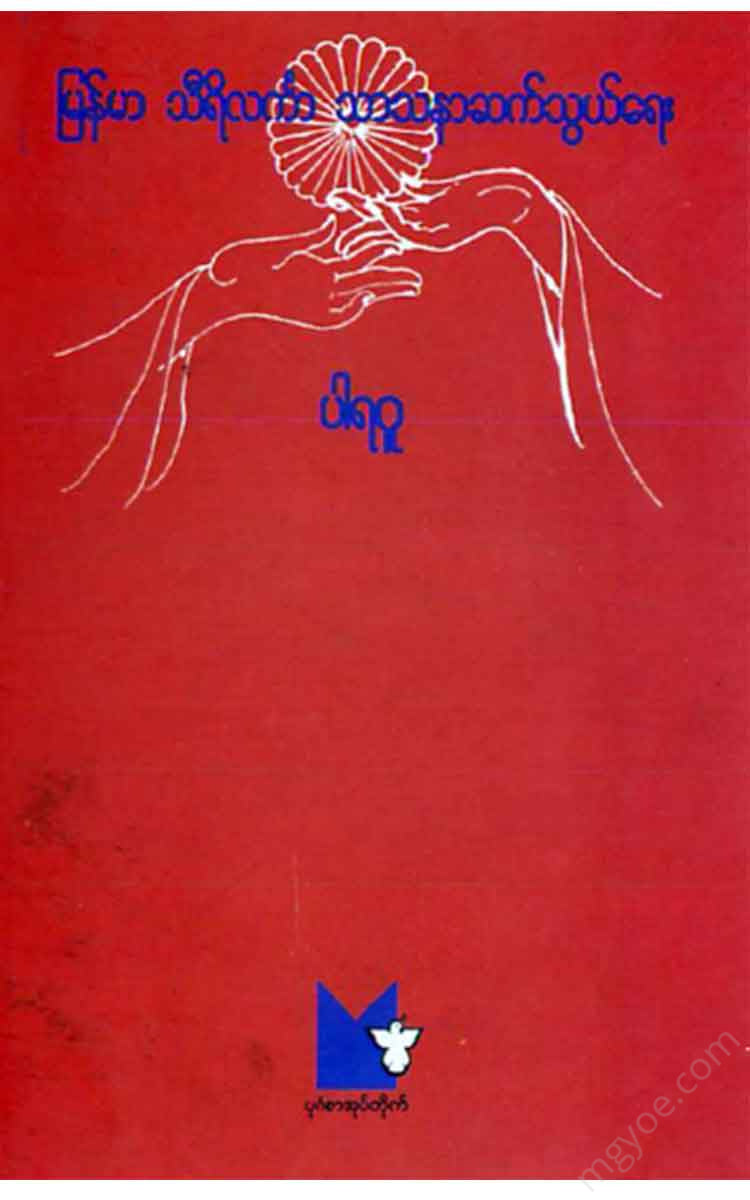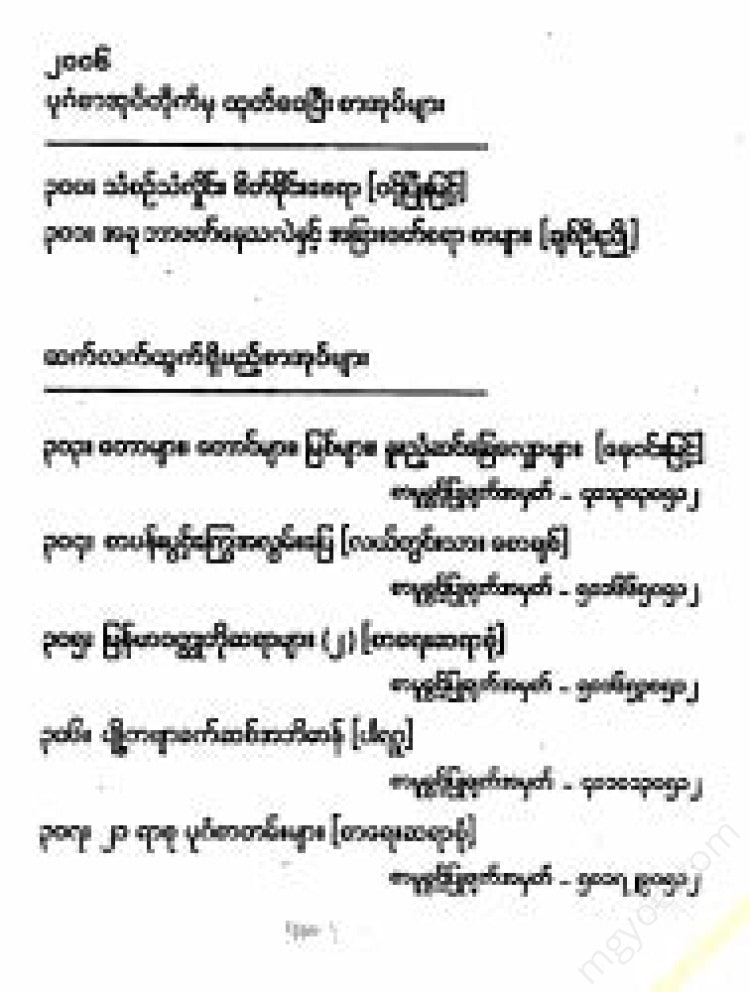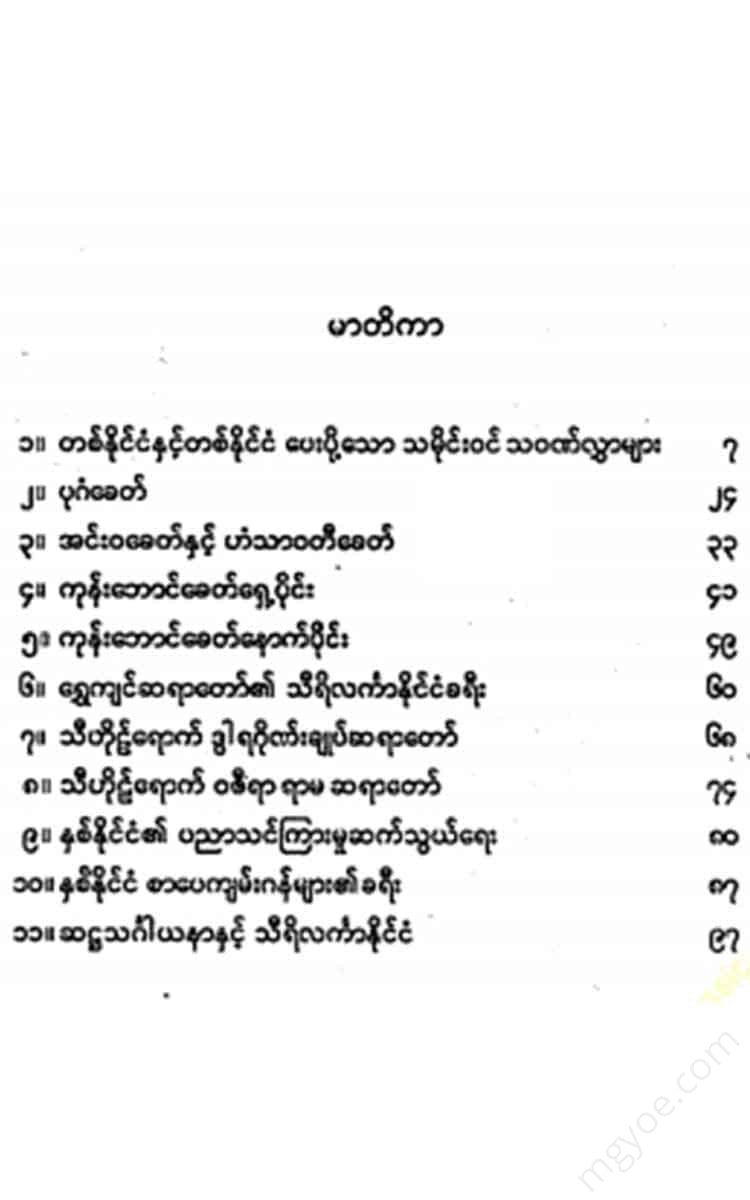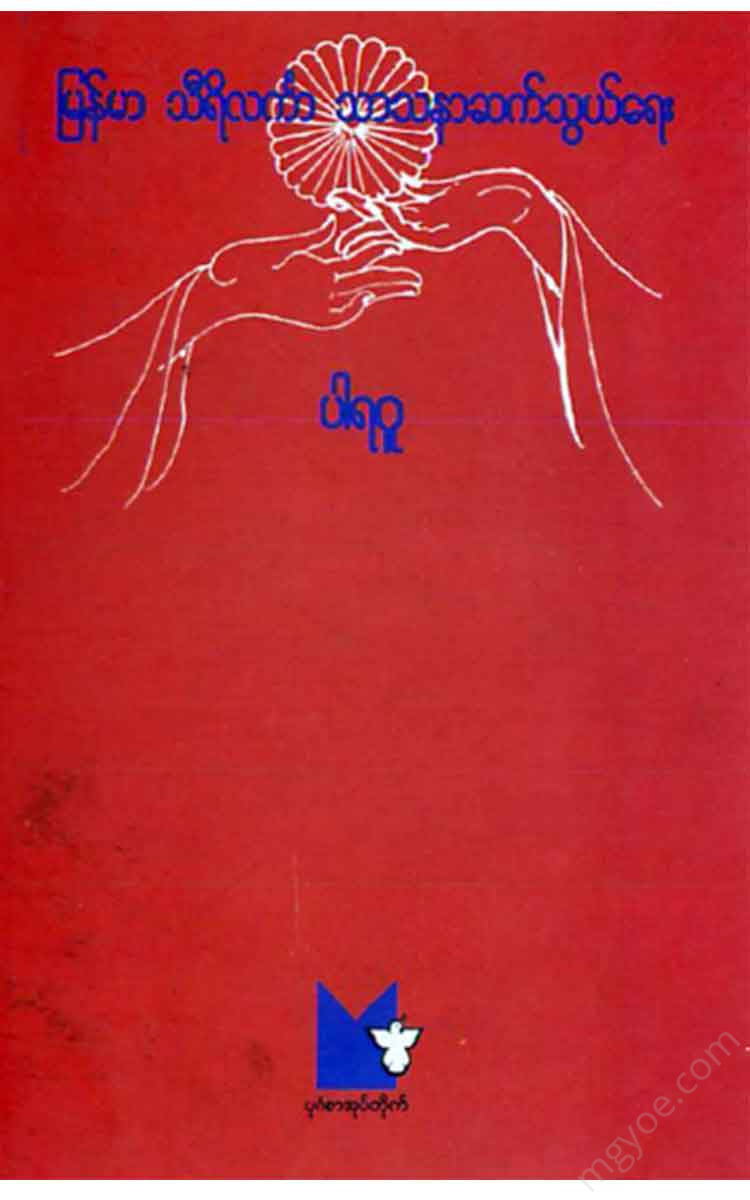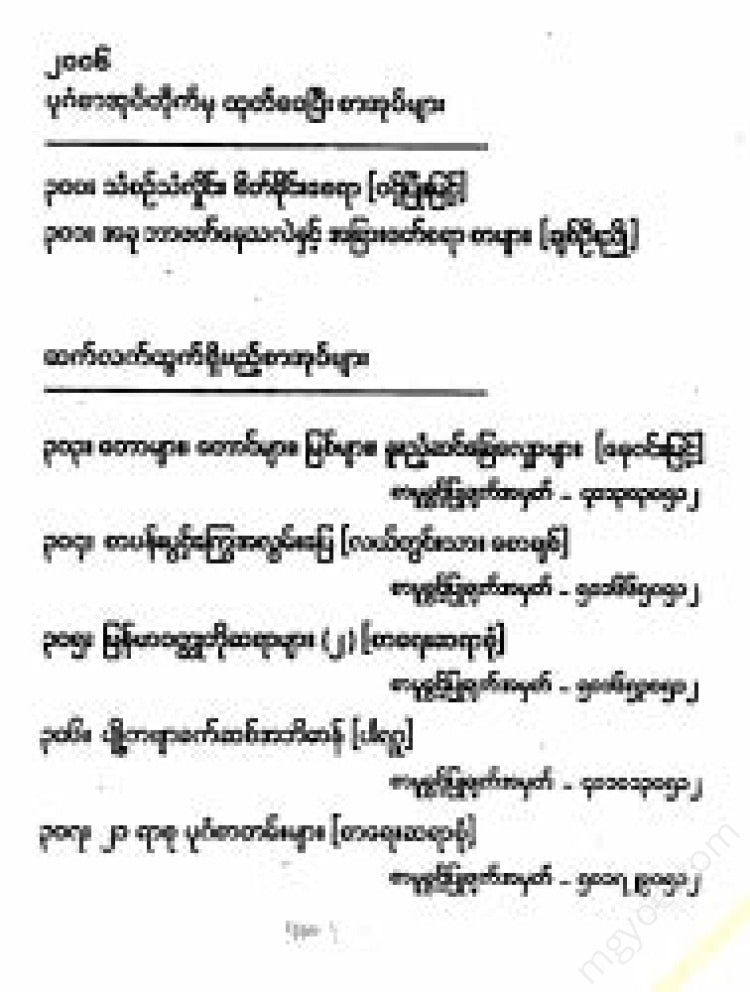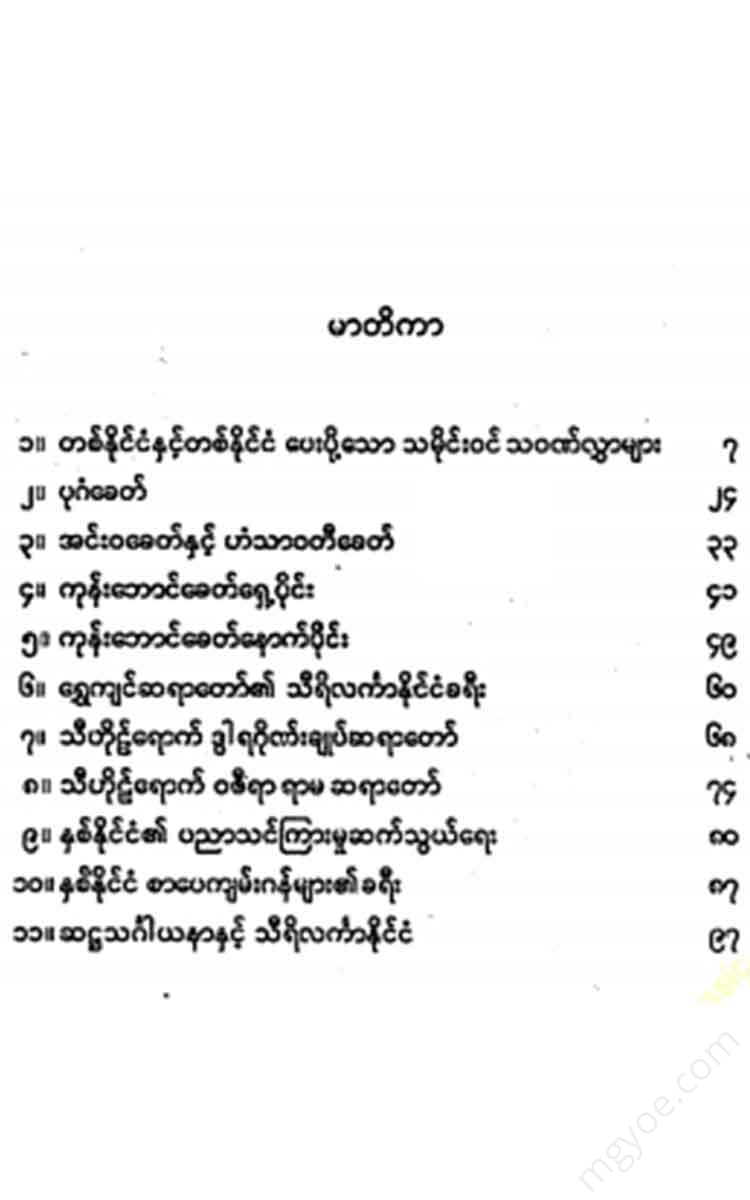Other Websites
Paragu - Myanmar-Sri Lankan Religious Relations
Paragu - Myanmar-Sri Lankan Religious Relations
Couldn't load pickup availability
There are historical "Sandhasekatha messages" or letters that were sent between Sri Lanka and Myanmar in ancient times. The messages are written in Pali. These messages shed light on the history of religious communication between Sri Lanka and Myanmar. Among these messages, the message that begins ' Sri Maha Jambu Deepa Ratana Punnapura Re Sri Pavara Vijayanantiya Sapandika Maha Dhamma Rajadhi Rajassana Namathu ' is a notable one. The message was written in the 1st day of the first lunar month of Ta Saungmone in the 2402nd year of the Buddhist calendar, 1220th year of the Burmese calendar. On Wednesday, some Ceylonese sent a message to King Mindon of Burma, who was in the Fifth Council, through the secretary of the Grand Vizier of Mongkai, ' Min Hla Thiri Zeya Thu ', regarding religious matters . The meaning and brief meaning of the message is as follows.
“Nowadays, since there are no kings in Ceylon who respect and love the Buddha, the deviant kings and nobles are investing a lot of money and building schools and trying to spread various kinds of knowledge and false beliefs throughout Ceylon. Therefore, we, the Burmese monks living in Ceylon, headed by Konna, Lisada, Pausaka, Abaya, Sekara, and Gunaratana, have decided to build a new building adorned with stupas, temples, sermon halls, and prayer halls at Vasakaduwa, near the Kathuganga River, six miles south of the city of Kolambi. Among these buildings, the first is a large stupa, eighty cubits long and sixty cubits wide, adorned with plaster walls, etc. They have been building it for about five years, and when the great Dhamma temple is completed, they want to offer the Three Pitakas and the Eighth Book of the Dhamma, the book of the Saddhavyakaruna, and the Buddha images in the name of the great monk.
“During the reign of King Vijayabahu I of Ceylon, a message was sent to the then reigning King of Yodaya (Thailand) to promote the religion of Ceylon, and the necessary gold, silver, jewels, books, and food were sent to him as a token of gratitude, as is clearly recorded in the Ceylon chronicles. Similarly, with the grace of His Majesty the King and the support of all the nobles, the weak religion of Ceylon was strengthened and good deeds were multiplied.”
The Sandhesa Katha, a message from the Golden Buddha, which begins with 'Arosayamiwa Ayanta Lanka Deepika Sukata Punyada Vya Kyamanthava Palaka ' , in which the Golden Buddha requested the venerable Thera to open the temple during his visit to Sri Lanka, is also a record in the history of Sri Lanka-Burma religious communication. The brief summary of the Sandhesa Katha is as follows.
“In ancient times, the disciple lived as a monk in the monastery of Gulon, Mandalay Mountain, Nay Pyi Taw, the jewel of Myanmar, preaching the Dhamma to the disciples who came to him and teaching the scriptures to all the monks of the Sangha with all his might. Then, the disciple was ashamed and disgusted with the life of a monk in Nay Pyi Taw, so he abandoned the life of a monk and lived as a hermit for two years in a forest one or two leagues away from Nay Pyi Taw. Now, he has been living for two years at the Minjusaka Monastery in Nwalan Mountain, ten leagues away from Nay Pyi Taw.
In his Thandasethakatha, Shwe Kyin Sayadaw introduces himself in this way, and then describes his great desire to visit the relic, how he tried many times to come to Ceylon to visit the relic but was unsuccessful, how he continued to try without giving up, how he finally arrived in Ceylon, and how he lived and traveled in Ceylon, and then describes his journey. He then continues as follows:
"The venerable ones are of great glory and power. Because the venerable ones have been granted the privilege of offering the Buddha's relic, which is rare for others to see and hold in their hands, every day with special offerings, and to see and hold it repeatedly and place it on their heads and worship it."
"The disciples are very poor in merit. The reason is that they have never had the opportunity to see and hold the Buddha's precious tooth relic, which is so dear to the Buddha, and to place it on their heads. Therefore, the disciples spent two or three days seeing and holding the Buddha's precious tooth relic, placing it on the outside of their palms and on their heads, anointing it with fragrant water, and offering it with white umbrellas, a bamboo pole, a chicken's tongue, etc., and with fine, hard food. I have begged for the opportunity to do so."
“The Buddha’s tusks are endowed with all the wonderful qualities and can give the desired benefits. The tusks, like the sun shining with many colors, come out of the temple of the sun, and with gold and silver, they give comfort to many people. They come out for a moment from the tusks, which are adorned with jewels and gold, and they give comfort to many people. They spread their white rays like the Buddha’s body, and after walking around for a while, they stand well above the heads of their disciples, and anoint themselves with fragrant perfumes, and they are adorned with the beauty of the Buddha. They are adorned with the beauty of the Buddha in the midst of the assembly, and they call everyone to worship them and then they do the same. If they are given such a chance, the disciples will be able to see the many wonders of the Buddha. "Contemplating gratitude, we will be happy and grateful for the rest of our lives. We will not forget the gratitude of the Master and carry out the religious affairs that the Master desires, both in the Master's island of Ceylon and in the island of Zambujeep, which is the home of his disciples."
On the 10th day of the first lunar month of the 1260th year of the Myanmar calendar (2442 CE), a monk named Sri Sumangala of Sri Lanka sent a message to the Sayadaw of the Samutipakhand Monastery in Mandalay, Myanmar, beginning with the words, " Aphriya Guna Ganaura Pataththa Vavarata Jambudipa Praka Janapada Abhute Mandalay Mahanagara. "
The message reflects a part of the history of Sri Lanka-Burma religious relations. The brief meaning of the message is as follows.
The fifty-three-year-old disciple of the Amarapura sect, Sri Saddhammavamsapala Sri Sumangala Nayakama Thera, who presides over the large monastery of Panasathalasha Sudassana Rama near the city of Ceylon, has applied. His disciples are members of the Amarapura sect of Ceylon. During the time when the capital of Amarapura was flourishing in Burma, during the reign of the great monk named "Nana Bhiwamsa Dhammasenapati Maha Dhammarajadhirajaguru", the lineage of disciples who were ordained by that great monk as a teacher has continued to this day. However, the lineage of his disciples seems to be weak now.
“ The Venerable ‘Siri Saddhammadhara’ who has come to Burma from Ceylon is a disciple of the Venerable ‘ Siri Saddhammadhara’, the head of the Amarapura sect in Mahatitta . That Venerable is now the head of the sect of his disciples in Mahatitta. The disciple is the teacher of the Venerable ‘Kammava’ and is of the same race and lineage. He is also a close relative of the disciple. That monk has now crossed the ocean for the development of Ceylon, disregarding the danger to his life. .
“Therefore, Your Excellencies, having shown your concern for that monk, his Burmese disciples in Ceylon, and the Ceylonese religion, please take care of the religious affairs that that monk desires. Please take charge of everything and take care of that monk while he is in Myanmar.”
In response to the Thandasath Katha sent by the Venerable Sri Sumangala Nayaka Maha Thera from Ceylon, the Monk Kai Sayadaw, on behalf of the religious leader , sent a letter to the Venerable Sri Sumangala Nayaka Maha Thera, saying, “This is the message of the Buddha, this
“The two volumes of the Thandasath Katha sent by the Venerable Sri Saddhamma Vamsapala Sri Sumangala, the abbot of the Amarapura sect of the Sudassana Rama monastery in Panathala, near my city in Ceylon, and the Venerable Sri Saddhamma Vamsa Ka Sivaka, the abbot of the Rama monastery in Kolayo, the abbot of the Amarapura sect of the Teyasekara Rama monastery, and the two stupas in which the Buddha’s relics are enshrined, the ivory image, the stupa for the relics, and the Tisivareit robe and face cloth donated for the disciple were received by the disciple on the ninth day of the full moon of the month of Kason in the 2443rd year of the religion. Sri Saddhamma Sara and his disciple, who had come to Myanmar, crossed the ocean and arrived in Yangon. They were near death and could not even reach their disciples.
“Having heard the news of the great monk’s arrival in Myanmar, despite the danger to his life, and the great merit of the monk according to the testimony of the monks, and the news that the monk had died of smallpox in Yangon before reaching Mandalay, the monks and other monks who were the leaders of his disciples were moved with compassion and attained the Dhamma. The disciples felt as if a great golden ship loaded with various treasures had crossed the ocean and, as it approached the shore, was completely lost and drowned because of the collapse of a huge cliff. In the same way, the monks hoped that the Dhamma would also attain the Dhamma. However, the disciples had a strong desire to continue working for the development of the Amarapura sect and the great religion in Ceylon.
In Sri Lanka, when there is a dispute or controversy regarding religious matters, the monks and lay people of Sri Lanka usually send a letter to the monks in Myanmar to seek a decision. At one time, a monk who had left the monastic order in Sri Lanka was criticizing the religion and the monks who were serving there. Regarding this matter, Upasena Thera of the Saddhammadaya Monastery in Pakadonara, Sri Lanka sent a letter in Pali to the Maha Visuddhayana Sayadaw of Myanmar, asking for the decision of the Sayadaw. Visuddhayana Sayadaw wrote a Pali letter to Upasena Thera in 1262 Myanmar. The summary of the story of the birth of the child is as follows.
“That monk who is so unbelieving and criticizing the religion and religious workers will soon become a heretic. Since the monk’s argument is unsound, unworthy of consideration, and unaccepted, there is no need for the Ceylonese monks to examine and decide. That person’s ideas will soon disappear.
If that monk rejects the Eighth Great Discourse without paying attention to it, then one should not argue with that monk. One should avoid that monk from a distance. For example, in the world, one avoids a mad dog from a distance.
At one time, in Sri Lanka, monks and nuns were arguing about whether it was appropriate to sit on chairs, benches, etc. during sermons. Regarding this issue, the Venerable Medhananda of Sri Lanka submitted a Pali letter to the Venerable Vazira Rama Sayadaw to resolve the issue. In 1266, the Venerable Vazira Rama Sayadaw resolved Medhananda's request by sending the Vinicchaya Saddhasakatha. The Burmese translation of the Sandhathekatha is as follows.
"I have answered the question of whether it is meritorious or unmerited for those who sit on stools, benches, chairs, etc., with their feet placed in front of the monks who are preaching the Dhamma, and listen to the Dhamma."
If there is a disrespectful mind, it is only unwholesome. It is impossible to do good. In this matter, the mind is the main thing.
Even if one has a respectful mind, sitting in such places and listening to the Dhamma is not considered disrespectful. Any disrespect in the Dhamma is only when one is invited to listen to the Dhamma but does not show respect, does not listen respectfully, does not sit respectfully, etc. Sitting on a chair with one's feet placed even a cubit below the place where the Dhamma is being preached is not considered respect for the Dhamma.
Therefore, in the Pariva Atthakatha
